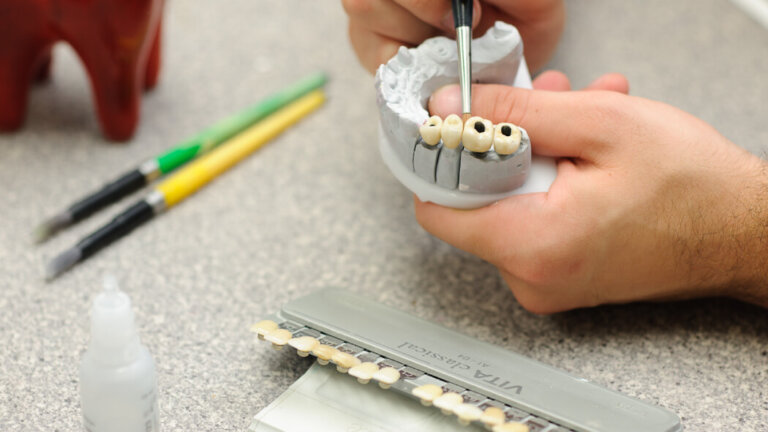The diastema is the space between the upper and lower first front teeth (central incisors). Gaps between teeth in the mammary gland are the norm due to ongoing jaw growth. A diastema between permanent teeth is a pathology and can be true or false.
Causes of diastema (gap between teeth)
The true cause of a diastema is a lip frenulum that is attached too low and overly developed, with fibers extending between the central incisors. A false diastema can result from harmful habits, an extra tooth in the midline, delayed eruption of the second incisors, or their absence, as well as anomalies in tooth shape and size, such as teeth that are too small, or protruding teeth (protrusion). Small gaps between the upper incisors are a normal condition before the canine teeth erupt. These gaps usually close on their own. However, a diastema larger than 4mm rarely disappears by itself.
Diastema risks
Diastemas are most often complained about because they look unaesthetic. They do not cause any other problems. In some cases, if the diastema is very large, there may be scrubbing and difficulty chewing.
Diastema treatment
Closing the gap between the teeth can be done with orthodontic treatment or with fillings and dentures.
Orthodontic treatment involves the use of braces or clear removable caps, which straighten the arches of the teeth and eliminate gaps. If the diastema is caused by an overly large lip flap, it must be removed by simple surgery. The orthodontist assesses when to remove the lip flap. This is usually done after the first phase of straightening, when the gap is closed, as otherwise scar tissue can grow into the diastema and interfere with the closure of the gap between the teeth. The advantage of orthodontic treatment is that the teeth remain completely healthy, their shape is not altered and a correct bite is created. The disadvantage is the long treatment time, usually requiring retention with various appliances (wires, plates, caps) after treatment. Orthodontic treatment is also more expensive than fillings or dentures.
Diastemas can be closed through dental bonding. The teeth are widened with a filling material to eliminate the gap. If the teeth are healthy, they usually don’t need to be ground down. In such cases, the enamel surface is simply roughened, adhesive is applied, and the tooth surface is shaped using composite resin. Sometimes, impressions are taken before the bonding procedure, and a wax-up is created in the dental lab on a plaster model to design the ideal tooth shape. The dentist then has a template to restore the correct shape and symmetry using composite. Advantages of bonding include closing the gap in a single visit and being less expensive than orthodontic treatment or prosthetics. Disadvantages are that the composite may lose its shine over time, change color, or chip. A longer-lasting solution is ceramic veneers—thin ceramic plates that are cemented to the tooth surface. If the teeth are healthy, minimal tooth reduction is needed. Impressions are taken, and the lab creates ceramic restorations that the dentist bonds to the teeth. Advantages of ceramic veneers are that they maintain color, shine, resist plaque buildup, and are durable. Disadvantages include the need to slightly grind the teeth and a higher cost compared to bonding.
If the teeth are more damaged by decay or contain large old fillings, ceramic crowns may be needed. Modern ceramic materials look very natural and are strong.
During bonding or prosthetic procedures, the teeth are widened. If the gap is too large, the restored teeth might look overly wide and unaesthetic. In such cases, orthodontic treatment or involving more teeth in the correction with bonding or veneers may be a better option to create a harmonious smile.



